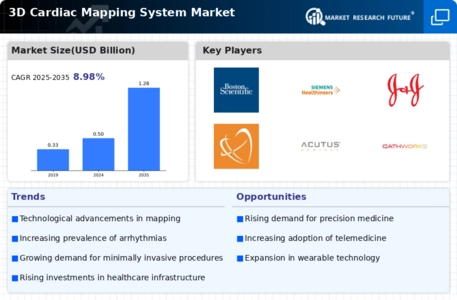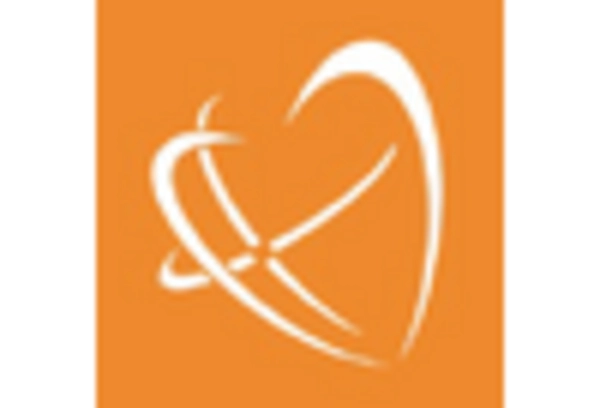Focus on Personalized Medicine
The emphasis on personalized medicine is reshaping the 3D Cardiac Mapping System Market Industry. As healthcare moves towards tailored treatment approaches, the demand for advanced mapping systems that can provide detailed insights into individual patient anatomy and pathology is growing. Personalized cardiac care allows for more effective treatment plans, particularly in complex cases of arrhythmias. The market is witnessing a shift towards systems that can integrate genetic and phenotypic data, thereby enhancing the precision of interventions. This trend is expected to drive market growth, as healthcare providers seek to improve patient outcomes through customized therapies, potentially increasing the market size by 15% in the coming years.
Growing Awareness and Training Programs
Growing awareness and the establishment of training programs are vital for the expansion of the 3D Cardiac Mapping System Market Industry. As healthcare professionals become more educated about the benefits and functionalities of 3D mapping systems, the demand for these technologies is likely to increase. Educational initiatives and workshops aimed at electrophysiologists and cardiologists are being implemented to enhance their skills in utilizing these advanced tools effectively. This focus on training is essential, as it not only improves the proficiency of healthcare providers but also fosters confidence in adopting new technologies. Consequently, this trend is expected to drive market growth, with an anticipated increase in the number of trained professionals contributing to a more robust market landscape.
Increased Adoption in Healthcare Facilities
The rising adoption of 3D cardiac mapping systems in healthcare facilities is a pivotal driver for the 3D Cardiac Mapping System Market Industry. Hospitals and specialized cardiac centers are increasingly investing in advanced mapping technologies to enhance procedural accuracy and patient safety. This trend is supported by the growing prevalence of cardiovascular diseases, which necessitates more sophisticated diagnostic tools. According to recent data, the number of electrophysiology procedures utilizing 3D mapping systems has surged by over 30% in the past two years. This increased adoption is indicative of a broader shift towards minimally invasive procedures, which are often associated with shorter recovery times and improved patient satisfaction.
Regulatory Support and Reimbursement Policies
Regulatory support and favorable reimbursement policies are crucial drivers for the 3D Cardiac Mapping System Market Industry. Governments and health authorities are increasingly recognizing the importance of advanced cardiac mapping technologies in improving patient care. As a result, there has been a push for streamlined approval processes for new devices, which encourages innovation and market entry. Additionally, reimbursement frameworks that cover the costs associated with 3D mapping procedures are likely to enhance adoption rates among healthcare providers. This supportive regulatory environment is expected to contribute to a market growth rate of around 10% annually, as more facilities are incentivized to invest in these advanced technologies.
Technological Advancements in 3D Cardiac Mapping
The 3D Cardiac Mapping System Market Industry is experiencing rapid technological advancements that enhance the precision and efficacy of cardiac procedures. Innovations such as improved imaging techniques and real-time data analytics are transforming how electrophysiologists visualize and interpret cardiac anatomy. For instance, the integration of artificial intelligence and machine learning algorithms into mapping systems is likely to streamline workflows and improve patient outcomes. As a result, the market is projected to grow at a compound annual growth rate (CAGR) of approximately 12% over the next five years. These advancements not only facilitate better diagnosis and treatment of arrhythmias but also contribute to the overall efficiency of healthcare systems, making them more appealing to medical institutions.

















Leave a Comment